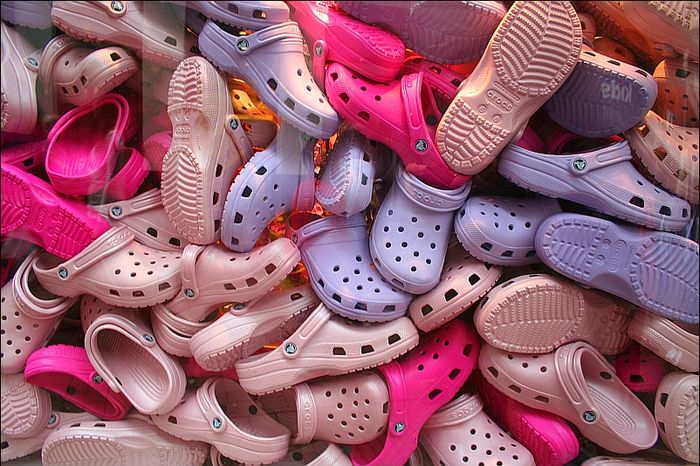‘Are the bloomers in the room with us now?’: The issue of chronically online micro-trends
From the sheer maxi dress to floral chokers: what stops these unique pieces from catching on in the real world?

Bloomers: a clothing piece that has been predicted to start trending by countless internet sources for a little over a year now. I have seen these pastel frilly shorts (with suspicious diaper energy) in many TikToks with “fashion girlies” posing in their bedrooms as they attempt to style the rouge item to divided comment sections. I’ve also seen them on recent runways: bloomer waistbands peeking out from tweed shorts or heavy leather biker trousers in Miu Miu’s Fall ’22 Ready-to-Wear runway. I am yet, however, to see them on the people around me. It is this fact that has led me to believe I have stumbled across the latest “trend” that seems to be having a hard time breaking through the “Pinterest-to-real-world” glass ceiling.
“I am yet, however, to see them on the people around me”
Often styled as a more whimsical biker short, online bloomers are paired with cowboy boots and graphic baby tees, or peek out from under short satin dresses. The established internet canon of how this garment should be worn, however, limits its reach. Not many people are willing to opt for frilly often translucent shorts and not much else, especially during the UK’s coldest months. Is it possible this item could just be in hibernation - simply waiting out the winter months before it starts gracing our streets? The more weather-appropriate and practical big fur hat/ headband has similarly carved a space on social media. Though perhaps not qualifying as mainstream, I have in fact managed to spot real people rocking comically large versions of the accessory on King’s Parade and other Cambridge streets, convincing me of its actual trend status. After watching ribbons and large heart pendant necklaces find their way onto friends’ heads and necks, items that both align with the general aesthetic of bloomers, I find that people are more willing to experiment with accessories than clothing items. So it’s possible that bloomers are just impractical - but then that begs the question: why would anyone, even the “TikTok girlies”, wear them in the first place?
At first glance, the pseudo-trend seems to have spawned out of nowhere. But a closer look reveals the frequency in which other 19th-century undergarments are being worn around in the form of white-tiered maxi skirts or lingerie slip dresses. It isn’t unusual to see underwear worn as outerwear, lacy bras as going-out tops, and pyjama shorts as comfier summer trousers. The saturation of the influencer landscape has prompted fashion influencers to exaggerate outfits to the point of irony in order to separate themselves from ‘the influenced’ and to establish a niche that sets them apart from others in their field. And this exaggeration is what’s allowed these microtrends to form and let bloomers thrive exclusively in these online spaces for a short amount of time. The garment is an extreme manifestation of other trending motifs like ruffles and ballet-core. However, it’s more reminiscent of a costume piece - an almost satirical recreation of the waifish Brandy Melville girl silhouette.
“It is extremely puzzling as to how someone would obtain it in the first place”
The hyper-specificity of this item would suggest it can be firmly labelled a micro-trend, likely to lose its appeal before becoming readily available. Unlike other recent micro-trends, however, it is extremely puzzling as to how someone would obtain it in the first place. Unlike an ugly grandpa sweater or large leather jacket, I am sceptical that anyone would just stumble upon them at their local Oxfam or spot them browsing online. A fashion influencer is able to spend hours scouring the internet for such a specific novelty piece to use on a singular Instagram post and drop hundreds of pounds on said piece if needs be. But the student sitting next to you in lectures would simply not have the time, budget or energy to do so.
This brings us back to my initial question: “are the bloomers in the room with us now?“, of which I can conclude, no, not at the moment at least. Even if you can count thousands of people on your feed frequently wearing the garment, when distilled through a global population of over 8 million that number becomes very, very small. Hyper-specific algorithms tailored only to your interests create echo chambers and a drastic variation between the realities of what is and isn’t actually trending. This makes staying in-trend on a microscopic level impossible at most, and excessively wasteful at the least. There is no need to buy into every trend that you notice, from fabric flowers to bloomers, when your reality has likely been warped by your screen time. And, in all honesty, it probably was never really trending in the first place.
 News / Uni to ‘review’ tripos rankings and weekend lectures in undergrad teaching overhaul10 April 2025
News / Uni to ‘review’ tripos rankings and weekend lectures in undergrad teaching overhaul10 April 2025 News / Rowing row continues as Oxford and Cambridge scrap women’s trial race9 April 2025
News / Rowing row continues as Oxford and Cambridge scrap women’s trial race9 April 2025 News / PETA urges Cambridge dictionary to change ‘derogatory’ rat definition11 April 2025
News / PETA urges Cambridge dictionary to change ‘derogatory’ rat definition11 April 2025 News / First candidate to announce chancellorship bid pledges to tackle bullying 12 April 2025
News / First candidate to announce chancellorship bid pledges to tackle bullying 12 April 2025 Lifestyle / First year, take two: returning after intermission14 April 2025
Lifestyle / First year, take two: returning after intermission14 April 2025





